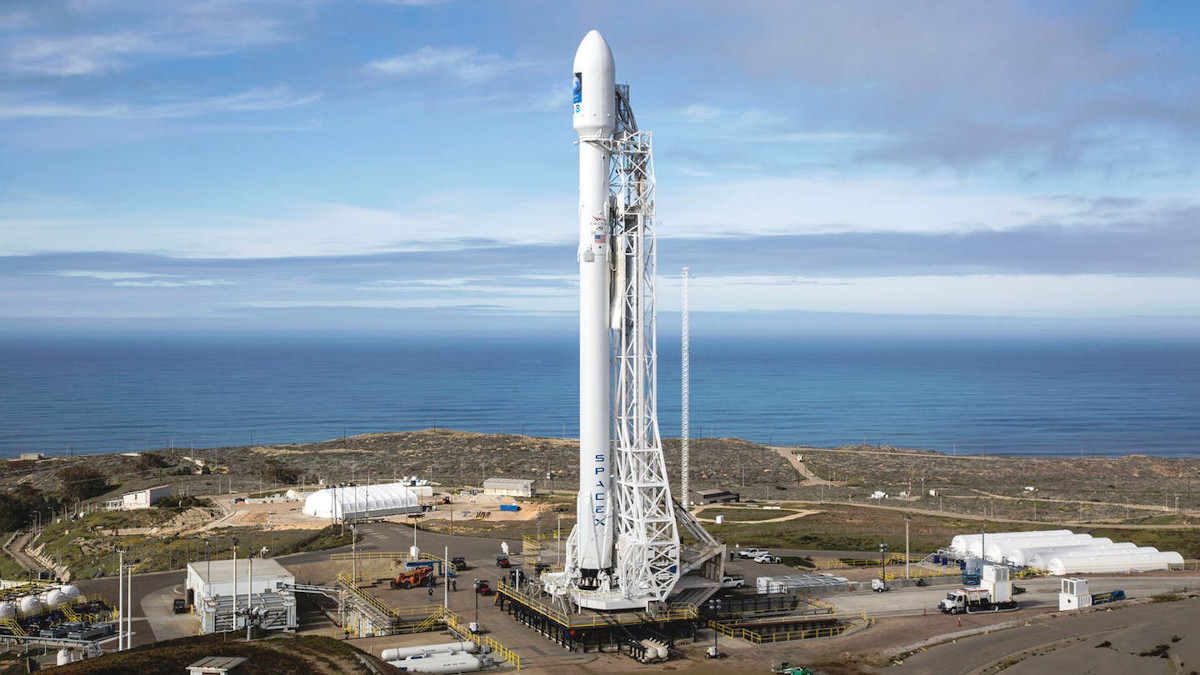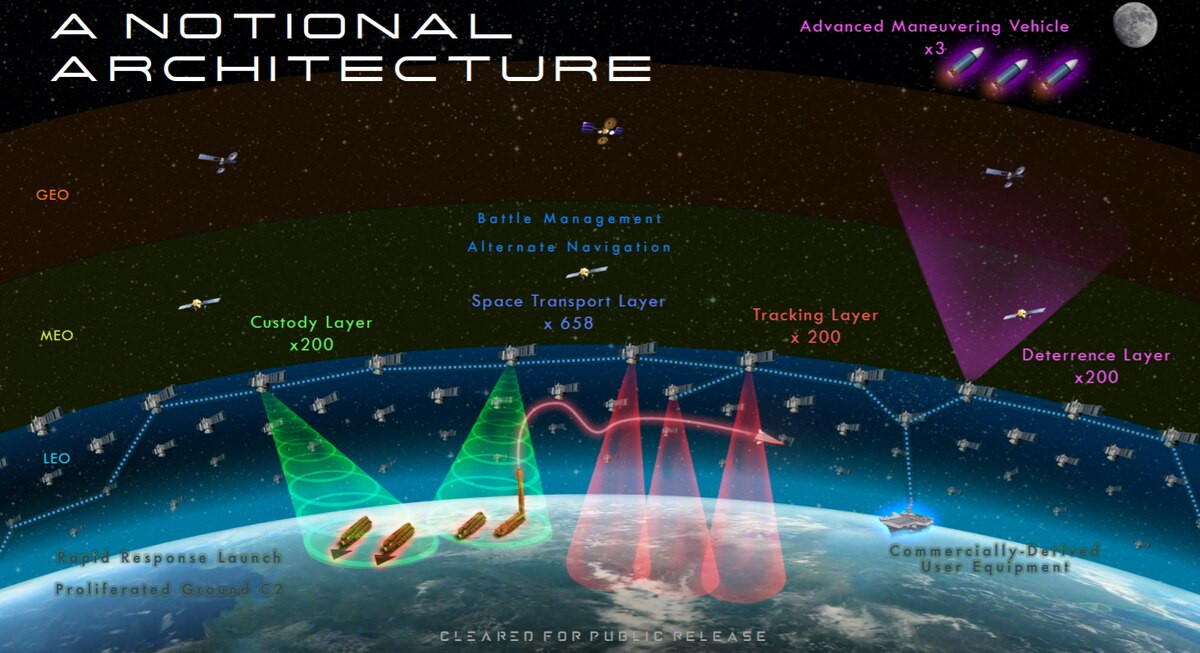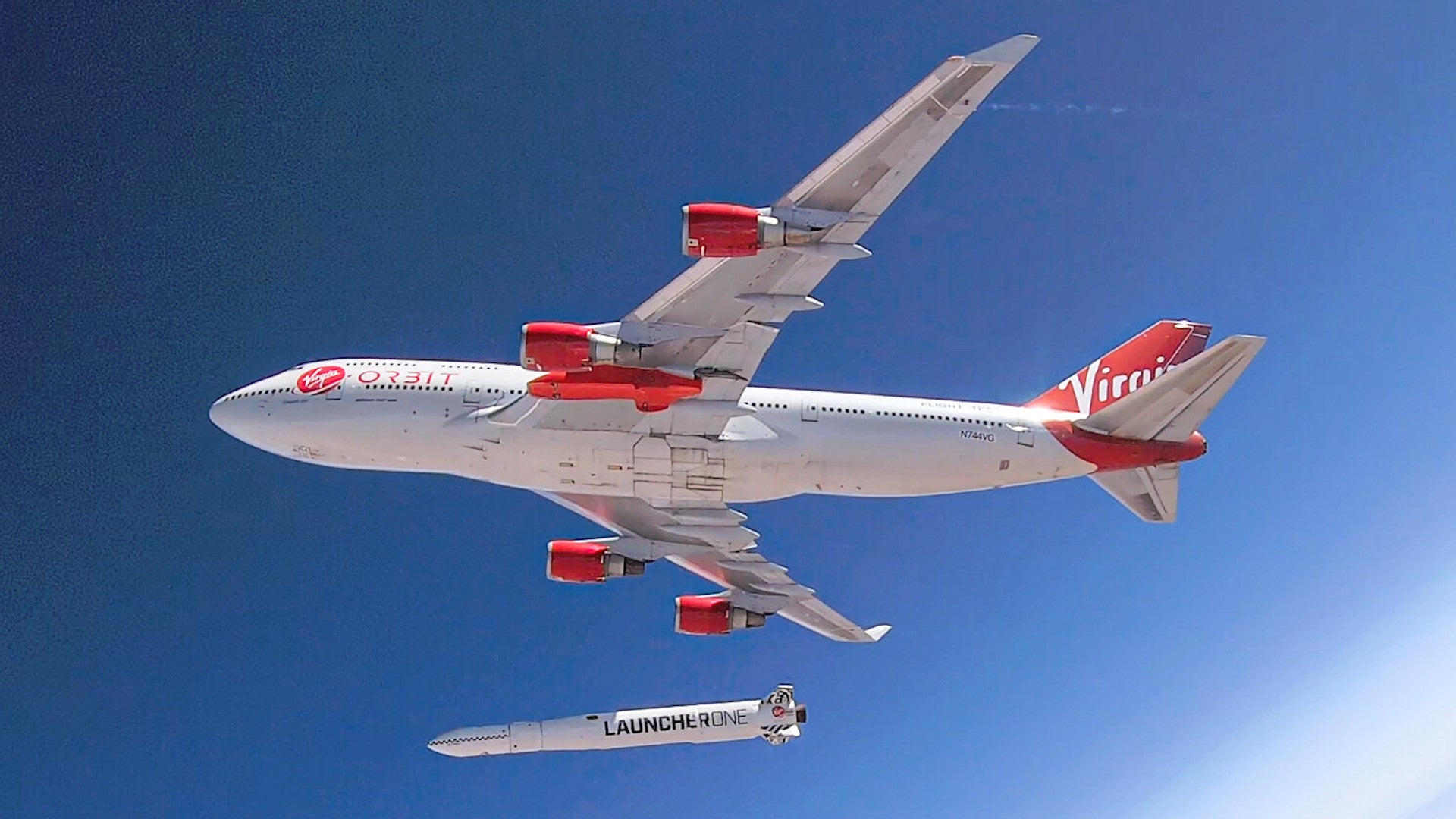The U.S. Air Force will conduct its first satellite launch from Guam next year using private space launch company Virgin Orbit’s Cosmic Girl, a modified Boeing 747 mothership, carrying a LauncherOne air-launched booster rocket. This underscores the inherent flexibility of this type of two-stage-to-orbit launch concept, something that the U.S. military as a whole is increasingly interested in as it seeks options for rapid access to space in the face of growing threats to American interests in orbit.
U.S. Air Force Lieutenant Colonel Ryan Rose, who runs the Small Launch and Targets Division within the Air Force Space and Missile Systems Center’s Launch Enterprise Systems Directorate, revealed that the service had settled on Guam and Virgin Orbit’s aerial space launch system in an interview with SpaceNews on Dec. 18, 2019. The Air Force had announced that it had hired VOX Space, a subsidiary of Virgin Orbit focused on competing for U.S. government contracts, for the launch, known formally as STP-27VP, in April, but did not say where it would take place.
The only publicly announced payload for the STP-27VP launch appears to be the MiniCarb cubesat, which communications company Iridium built under contract to the Department of Energy’s Lawrence Livermore National Laboratory (LLNL) and NASA’s Goddard Space Flight Center. Its primary mission as it travels in Low Earth Orbit (LEO) will be monitoring greenhouse gases in the atmosphere and it will be able to transmit data it collects back to researchers on the ground via Iridium’s “Big LEO” constellation.
During the actual launch, Virgin Orbit’s specially-configured 747 will fly to an appropriate altitude and launch position with a LaunchOne rocket, with MiniCarb inside, under its left wing. The crew will then launch the rocket, which will carry the satellite into orbit. You can read more about Cosmic Girl, and how the plane leverages that aircraft’s unique built-in externally heavily lift capability, in this past War Zone piece.

Back in April, the Air Force had suggested that VOX Space might conduct the launch from Mojave Air and Space Port, where Cosmic Girl is based. It’s still not clear if the 747 will stage from Andersen Air Force Base or Guam International Airport. However, even before getting this military contract, representatives of Virgin Orbit and its subsidiary have been publicly talking about its desire to use Guam, in general, as a major hub for its operations.
“We’re excited about Guam because it makes for a great hub,” William Pomerantz, Vice President of Special Projects at VOX Space, told The Guam Daily Post in January. “You can get to a lot of places on missions from there.”
“We’re not necessarily looking at having an aircraft based on Guam,” Mandy Vaughn, VOX Space’s President, also told The Guam Daily Post for the same story. “For the first few launches, or campaigns, we’d likely ship the rocket itself and the support equipment by boat over to Guam and probably fly the payloads in on another cargo aircraft.”

One of the inherent benefits of a two-stage-to-orbit space launch system utilizing a flying mothership is the ability to rapidly redeploy that aircraft to different staging locations depending on the exact mission requirements or to potentially avoid delays due to bad weather or other factors at the primary launch site. That is something that is impossible to do with fixed launch sites for traditional space launch rockets.
The use of a mothership aircraft also allows the actual air launch of the payload-carrying rocket to occur at a tertiary location some distance away from the main staging location, which offers additional flexibility. Other countries, including Russia and China, are also in the process of developing similar two-stage-to-orbit capabilities for many of the same reasons.
“For decades, people have wanted to make rockets operate with airline-like efficacy – lots of flights, quick turnaround time,” VOX Space’s Pomerantz added in his interview earlier this year with The Guam Daily Post, referring to the kind of space launch capacity the company is looking to offer.
As VOX Space’s President Vaughn noted, there is still the need to preposition assets ahead of launches. The LauncherOne also has a maximum payload weight of around 500 pounds for missions headed to Low Earth Orbit (LEO), which is small by modern satellite standards. By comparison, SpaceX’s Falcon 9, a traditional space launch vehicle, can loft 50,265 pounds to LEO.

Of course, Virgin Orbit isn’t targeting the same marketspace as companies such as SpaceX, aiming its services more at the growing industry around the development of small, lower-cost satellites, such as MiniCarb. The U.S. military has become particularly interested in the possibility of using smaller satellites, or leveraging existing commercial ones, to quickly and relatively cheaply establish constellations that can handle communications, satellite navigation, and other tasks. The U.S. military’s Rapid Agile Launch Initiative (RALI), a joint effort between the Space Test Program and the Defense Innovation Unit, is funding the STP-27VP launch as part of these broader efforts exploring rapid and response space access concepts.
The hope is that these space-based networks would also be less vulnerable to attack given their overall density, which would require an opponent to engage hundreds of individual satellites to seriously disrupt the operations of space-based communications or other capabilities. It would also be easier to rapidly replace any disabled or destroyed cubesats using alternative launch concepts, such as VOX Space’s two-stage-to-orbit system.
“If I can build spacecraft for a million dollars or less, if I can pull them off the production lines and use them, I can now afford to lose things,” then-Space Development Agency Fred Kennedy told SpaceNews in April. “I’m not scared anymore. I can put up several hundred satellites and know that maybe 75 percent of them will work and that would be just fine.”

There have been critics of this concept, including outgoing Secretary of the Air Force Heather Wilson, who said later that month that tabletop wargames had raised serious questions about its validity. “Launching hundreds of cheap satellites into theater as a substitute for the complex architectures where we provide key capabilities to the warfighter will result in failure on America’s worst day if relied upon alone. The analysis shows that,” she said.
The launch from Guam is just one of a number of small satellite launches the Air Force plans to conduct in 2020 in support of the Rapid Agile Launch Initiative (RALI), showing that the service and the U.S. military as a whole still remains invested in the concept to at least some degree. The outcome of STP-27VP and how the United States’ future plans regarding military activities in space continue to evolve, including the impending establishment of a new Space Force service branch, will no doubt inform the future of RALI and any related efforts.
Virgin Orbit certainly seems hopeful that, U.S. contracts or not, it will be steadily increasing its small satellite launches from the Western Pacific, and demonstrating the value of its two-stage-to-orbit system in the process, in the coming years.
Contact the author: joe@thedrive.com
